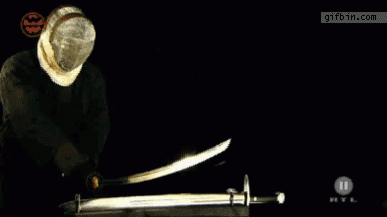|
Clarence posted:Is this certainty, or just a very high probability? I seem to remember that it's something like a 98% probability
|
|
|
|

|
| # ? May 14, 2024 19:52 |
|
Benedict Arnold once tried to "liberate" Quebec City from the English during the war of independence. He figured that the French citizens would welcome the Americans with open arms against their English overlords. What he didn't count on was the fact that the most of the French within the city wanted nothing to do with the Americans, who had occupied Montreal a few weeks earlier. Guy Carlton who was in charge of the garrison also outnumbered the Americans. When the fight came, Richard Montgomery was killed, Arnold was wounded and Daniel Morgan was captured along with 400 American troops. It was the first major defeat for the Americans in the war.
|
|
|
|
Arcsquad12 posted:Benedict Arnold once tried to "liberate" Quebec City from the English during the war of independence. He figured that the French citizens would welcome the Americans with open arms against their English overlords. What he didn't count on was the fact that the most of the French within the city wanted nothing to do with the Americans, who had occupied Montreal a few weeks earlier. Guy Carlton who was in charge of the garrison also outnumbered the Americans. When the fight came, Richard Montgomery was killed, Arnold was wounded and Daniel Morgan was captured along with 400 American troops. It was the first major defeat for the Americans in the war. Wasn't that the wound that was part of him getting all cranky and discontent with Continental leadership?
|
|
|
|
canyoneer posted:Wasn't that the wound that was part of him getting all cranky and discontent with Continental leadership? That and other American generals kept kill-stealing his victories.
|
|
|
|
Clarence posted:Is this certainty, or just a very high probability? High probability. Obviously, there are pockets of people in Europe who never interbred much outside of their own little populations (Basques, Romanshs, {insert ethnic group here}). Secondly, Family histories get fuzzy as gently caress the farther back you go, so even if grandpa is convinced that his family came from Scotland because they have red hair, that may not actually be the case. Same thing with Genghis Khan, or virtually any ruler who had a lot of sex. There are a lot of people who can probably trace their lineage back, there are very, very few who can for sure trace their lineage back to those people.
|
|
|
|
A White Guy posted:High probability. Obviously, there are pockets of people in Europe who never interbred much outside of their own little populations (Basques, Romanshs, {insert ethnic group here}). Secondly, Family histories get fuzzy as gently caress the farther back you go, so even if grandpa is convinced that his family came from Scotland because they have red hair, that may not actually be the case. In the case of Genghis Khan that's not quite true, because his Y chromosomal lineage has been identified, although technically it traces back to a close male relative of Khan's, not necessarily Genghis himself.
|
|
|
|
Do you have to take into account the preference for incest amongst the European nobility?
|
|
|
|
nimby posted:Do you have to take into account the preference for incest amongst the European nobility? Rich or powerful people everywhere have tended to intermarry since time began. It's the easiest way to keep power and property from being spread too thin. I read a piece a while back on cousin-marriages in rich American families, it was basically the same. Supposedly, British royalty descend from the prophet Mohammad. See also: https://en.wikipedia.org/wiki/Descent_from_antiquity and in particular the Confucius line is supposed to be valid. Carthag Tuek has a new favorite as of 11:35 on Feb 25, 2016 |
|
|
|
hard counter posted:PYF Historical Fun Fart The English word fart is one of the oldest words in the English vocabulary. Its Indo-European origins are confirmed by the many cognate words in some other Indo-European languages: It is cognate with Greek πέρδομαι (perdomai), as well as the Latin pēdĕre, Sanskrit pardate, Avestan pərəδaiti, Italian fare un peto, French "péter", Russian пердеть (perdet') and Polish "pierd" << PIE *perd [break wind loudly] or *pezd [the same, softly], all of which mean the same thing. Like most Indo-European roots in the Germanic languages, it was altered by Grimm's law, so that Indo-European /p/ > /f/, and /d/ > /t/, as the German cognate furzen also manifests.[2][3][4][5]
|
|
|
|
Bit of a crosspost from something I asked in the Funny Pictures thread; a request if I'm remembering right or not. I tried doing some googling, and all I got were gifs and "who would win" forum discussions.MisterBibs posted:With regards to Katana Talk, aren't they generally lovely weapons unless made really well? I vaguely recall reading that the whole folded-a-billion-times thing, and the swords general design itself, were based on Japan not having the materials to make stuff like European broad/longswords.
|
|
|
|
MisterBibs posted:Bit of a crosspost from something I asked in the Funny Pictures thread; a request if I'm remembering right or not. I tried doing some googling, and all I got were gifs and "who would win" forum discussions. If memory serves the quality of the katana depended on the particular folding technique used; some of them were hard to do properly but it also wasn't exactly magical samurai ingenuity; it was a practical concern. Iron was hard to come by in Japan at the time and their smelting techniques didn't produce consistent results when they made steel. Using the hardest steel and nothing else produced a lovely sword but if you layered multiple hardnesses or carbon contents over each other you could get a razor sharp edge and a tougher blade. One of the reasons they were different had to do with how different warfare was in Japan when compared to, say, Europe. Europe was basically drowning in coal and iron so "let's make steel EVERYTHING" wasn't a stretch. Japan was quite different so they didn't have plated armor or huge mail coats like European war had. If memory serves armor in Japan was mostly made of bamboo and leather; nobles could afford most of a metal breastplate, a steel helmet, and some scaled/lammelar armor but basically never a full suit of metal. They also wore lighter armor compared to Europe. The construction of a katana was done the way it was because fighting was quicker in Japan. Whoever managed to strike first usually won and you were expected to make your first strike a death blow. A katana wasn't expected to be used more than a few times. Samurai were also...kind of odd in Japanese war. Like Europe most of the actual fighting was done by peasants with pointy stick weapons. Samurai were expected to seek each other out in combat and, if they bothered to interact with common soldiers, did it from horseback with pole weapons. Fighting with a katana was an exceptional thing; the idea that they were war-winning swords is a weird romantic ideal people came up with later. Samurai being super honorable nobles was also mostly bullshit. These were a caste of dudes above everybody else that were prone to murdering peasants just because they felt like it. Kind of a tangent and not a fun fact, though. Well it's fun to use to piss off weeaboos. Actually that does make me think of a fun fact about Japanese warfare. There were a few guys that went down in time because they were, in fact, super duper honorable. At one point there were salt and rice boycotts against a particular region intended to gently caress them up. This caused food problems for more than just the soldiery. Uesugi Kenshin arranged secret gifts and supplies to the area, later saying "wars are to be won with swords and spears, not with rice and salt" while setting a precedent among Japanese war that lasted for a while. This was also a huge deal because some of the people affected by the blockade were followers of his rival at the time, Takeda Shingen. He instructed that food supplies should be sold to merchants that would go to the area and that they were forbidden from excessive profiteering; the price should be standard. He wrote Shingen and said stuff to the effect of "your people are suffering and others are doing this on purpose. This poo poo ain't cool, have some supplies. There are no ulterior motives; this is not your peoples' fault and they shouldn't be punished."
|
|
|
ToxicSlurpee posted:
This is a common misconception about Medieval European warfare. The population densities of post-Roman Europe were really low, and the farming practices at the time led to relatively little surplus beyond what the peasants could subsist on. Peasants farmed while nobles and mercenaries did the fighting. Up until guns and large standing armies became a thing, armies were comparatively tiny and were almost exclusively focused on siege warfare.
|
|
|
|
|
The katana was a perfect piece of art. A true master's statement making a truly...mediocre sword out of utter crap steel. Katanas are an excellent design of sword for cutting through soft tissues: i.e. the human body, and will absolutely shatter if they hit anything harder than bone or leather. And even then if you hold one wrong, you actually have to use a surprisingly limp wrist when hitting things or they tend to break even when hitting the mats of bamboo they use during training and exhibitions to keep the damned thing from shattering. You can't use them as a bludgeon like anyone else's swords. Katanas are masterpieces of swordsmithing and true testament to the craftsman's ability and skill to make a weapon at least that good in a land with poo poo-all for iron (and what they had was utter crap), and relatively poor metal working skills due to the lack of material to practice with. As weapons they are over-romanticized utter crap that only really worked in the iron vacuum that is the Japanese islands. In a "who would win" matchup, in unarmored combat between true masters who the gently caress would know since the fighting style required for a delicate snowflake katana and anything else would be so different it might as well be two amateurs swinging at each other. The moment the other guy starts wearing chainmail, a curraise, or just blocks the katana with his own blade (seriously, a South American 'sword' that's flat wood bat with obsidian shards in it to give it an edge would likely be too hard for a katana) the balance of power would shift dramatically away from the katana-user as it's only a matter of blows before that blade snaps like a twig.
|
|
|
|
Alkydere posted:As weapons they are over-romanticized utter crap that only really worked in the iron vacuum that is the Japanese islands. Well, it helps they're pretty. Look at this Muramasa.  Wow. I remember reading the curved shape is due to differences in the material for the edged side and the blunt side, once again for iron conservation reasons.
|
|
|
|

|
|
|
|
Snapchat A Titty posted:Rich or powerful people everywhere have tended to intermarry since time began. It's the easiest way to keep power and property from being spread too thin. I read a piece a while back on cousin-marriages in rich American families, it was basically the same. Isn't there a huge debate as to whether Confucius even existed as a singular/actual person, let alone had a traceable ancestory?
|
|
|
|
ToxicSlurpee posted:If memory serves the quality of the katana depended on the particular folding technique used; some of them were hard to do properly but it also wasn't exactly magical samurai ingenuity; it was a practical concern. Iron was hard to come by in Japan at the time and their smelting techniques didn't produce consistent results when they made steel. Using the hardest steel and nothing else produced a lovely sword but if you layered multiple hardnesses or carbon contents over each other you could get a razor sharp edge and a tougher blade. Alkydere posted:The katana was a perfect piece of art. A true master's statement making a truly...mediocre sword out of utter crap steel. Thank you guys so much! It kinda annoyed me that the folks in that thread thought I was trolling or something, I really didn't know and I wanted to. And now I do 
|
|
|
|
Europe could make katanas too, they weren't stupid. They had curved blades, they knew the advantages and disadvantages of that. They went with what they did because it was a better design for how they fought.
|
|
|
|
This thread is amazing sans the blatantly wrong or misconstrued facts. Still working through it, hope this hasn't been posted yet Band of Thebes is pretty dope. An elite Military unit, 150 pairs of gay couples with the idea that you'll fight harder for your loved one. They were stomping fools left and right and contributed greatly to the fall of Sparta winning a decisive battle against them. Well, until Alexander the Greats dad wiped them out or w/e
|
|
|
|
MisterBibs posted:Thank you guys so much! It kinda annoyed me that the folks in that thread thought I was trolling or something, I really didn't know and I wanted to. And now I do nobody thought you were trolling really they thought you were fishing for this type of response https://1d4chan.org/wiki/Katanas_are_Underpowered_in_d20
|
|
|
|
https://www.youtube.com/watch?v=pzV6J3SQ8Qs "May need emergency surgery in the studio..." Obviously the guy in the video is an idiot to treat it like that, but katanas really are not good swords.
|
|
|
|
The other thing to notice there is what happens to the cutting edges of both blades. Weapons colliding in that way in a real fight was rare; you absolutely did not want to gently caress up your weapon without a good reason. You didn't block things with the bladed edge of anything if you could help it.
|
|
|
|
Aesop Poprock posted:Isn't there a huge debate as to whether Confucius even existed as a singular/actual person, let alone had a traceable ancestory? It's possible, I have no idea. To be fair, the further back one gets, the less "historical" historical sources get. Like the greek guy I'm too lazy to look up who just put whatever crazy poo poo he heard in his histories.
|
|
|
|
Snapchat A Titty posted:Like the greek guy I'm too lazy to look up who just put whatever crazy poo poo he heard in his histories. So basically all of them
|
|
|
|
goose fleet posted:So basically all of them True, but I guess some were worse than others. Here, this guy: 
|
|
|
|
ToxicSlurpee posted:The other thing to notice there is what happens to the cutting edges of both blades. Weapons colliding in that way in a real fight was rare; you absolutely did not want to gently caress up your weapon without a good reason. You didn't block things with the bladed edge of anything if you could help it. That's... not really supported by anything. There are a pretty significant number of surviving fencing treatises from the middle ages (Nice collection in this wiki: http://wiktenauer.com/wiki/Nuremberg_Group) concerning how to fight with the sword, and pretty much all of them include edge-to-edge parrying and binding as a completely central aspect. Swords are made of steel. Steel is resilient as gently caress, particularly when treated in the way swords are. A sword held by a person always has a certain amount of give to it (hence why that test where he swings it full-force at a bolted-down blade is pretty bogus), and in a regular combat you generally don't generate enough force to meaningfully damage it, unless you're dealing with prolonged metal fatigue. Even a relatively thin blade like from a rapier stands up against repeated unusually strong hits just fine: https://www.youtube.com/watch?v=cFRxZod-iI0 It really boils down to a simple question: Some guy swings a sword at your head. You can either bring up your own sword to parry, or just kinda try to dodge. There's a tiny chance your sword might get damaged, but so what? Swords are affordable, you can always buy or loot a new one. The same thing can't be said for your skull.
|
|
|
|
Getting a little nick on the edge of your blade isn't really critical damage for a sword. You can still cut up dudes just as well with it after.
|
|
|
|
Perestroika posted:That's... not really supported by anything. There are a pretty significant number of surviving fencing treatises from the middle ages (Nice collection in this wiki: http://wiktenauer.com/wiki/Nuremberg_Group) concerning how to fight with the sword, and pretty much all of them include edge-to-edge parrying and binding as a completely central aspect. Fencing was primarily done using weapons more geared toward thrusting than slashing. Some could do both (and of course saber fighting was entirely slashing) but even so a parry with a fencing weapon was less "bash weapons together" and more "redirect the blow." Even then you'd prefer to use the flat of a blade rather than the edge of one. You wouldn't likely break the weapon but you'd dull or notch it, which you didn't generally want to have happen. Fencing is also very different from the sword and board fighting that you'd see on a battlefield.
|
|
|
|
Ensign Expendable posted:Getting a little nick on the edge of your blade isn't really critical damage for a sword. You can still cut up dudes just as well with it after. Not according to the Extended Swords & Scabbards v4.0 rulebook; each nick gets you -1 on your d20. That poo poo adds up!
|
|
|
|
Alkydere posted:katanas really are not good swords. Katanas are fine so long as you don't go hog wild over the mythos and realize that, like most weapons, it was purpose built for an objective with limited uses outside that purpose. A rapier is a comparable European weapon (specialized for the thrust instead) that was pretty great for its intended purpose but had issues with other uses. Not many working examples survive intact because its ends were prone to breakage. A rapier's body would also probably fail like the katana's if you subjected it to a hard contact test too (not the kind in the video linked). In a related fact, the vikings were in a similar position where readily accessible local sources of ore were of the lovely bog iron variety (in their case) so they coped with advanced forging techniques that were comparable to the blast furnaces of later periods. Since they had plenty of coal they did not need to meticulously layer their product. Once in a while a norse trader would come back from Persia with ore /iron of high quality and those, coupled with the aforementioned advanced forging techniques, produced some great weapons for the period. There was a documentary a few years ago about a particular maker of them (with a Frankish name iirc) but it was mostly a speculative piece about the manufacture techniques than a reconstructive history. hard counter has a new favorite as of 22:35 on Feb 27, 2016 |
|
|
|
ToxicSlurpee posted:Fencing was primarily done using weapons more geared toward thrusting than slashing. Some could do both (and of course saber fighting was entirely slashing) but even so a parry with a fencing weapon was less "bash weapons together" and more "redirect the blow." Even then you'd prefer to use the flat of a blade rather than the edge of one. You wouldn't likely break the weapon but you'd dull or notch it, which you didn't generally want to have happen. Perhaps fencing isn't the right term, but those treatises I mentioned deal primarily with longswords, arming swords, greatswords, and messers. All of which were absolutely weapons of war, and instructions for fighting fully armoured enemies (like on the battlefield) were a common part of those treatises.
|
|
|
|
hard counter posted:In a related fact, the vikings were in a similar position where readily accessible local sources of ore were of the lovely bog iron variety (in their case) so they coped with advanced forging techniques that were comparable to the blast furnaces of later periods. Since they had plenty of coal they did not need to meticulously layer their product. Once in a while a norse trader would come back from Persia with ore /iron of high quality and those, coupled with the aforementioned advanced forging techniques, produced some great weapons for the period. There was a documentary a few years ago about a particular maker of them (with a Frankish name iirc) but it was mostly a speculative piece about the manufacture techniques than a reconstructive history. A historical maker? I would be interested in that if you can remember more.
|
|
|
|
ToxicSlurpee posted:Fencing was primarily done using weapons more geared toward thrusting than slashing. Some could do both (and of course saber fighting was entirely slashing) but even so a parry with a fencing weapon was less "bash weapons together" and more "redirect the blow." Even then you'd prefer to use the flat of a blade rather than the edge of one. You wouldn't likely break the weapon but you'd dull or notch it, which you didn't generally want to have happen.  Perestroika posted:Perhaps fencing isn't the right term, but those treatises I mentioned deal primarily with longswords, arming swords, greatswords, and messers. All of which were absolutely weapons of war, and instructions for fighting fully armoured enemies (like on the battlefield) were a common part of those treatises. Snapchat A Titty posted:A historical maker? I would be interested in that if you can remember more. Siivola has a new favorite as of 23:02 on Feb 27, 2016 |
|
|
|
Snapchat A Titty posted:A historical maker? I would be interested in that if you can remember more. Only a wiki source, but this was the particular maker https://en.wikipedia.org/wiki/Ulfberht_swords in the documentary iirc. Something the wiki doesn't mention is that there were a number of other makers (most with norse names) producing swords of similar quality so this kind of manufacture is more likely to be a Northern thing than a Central European thing but that's really a minor point - it's hard to be definitive about stuff like this anyway.
|
|
|
|
What the gently caress is going on in this image
|
|
|
|
A double-leg takedown, what does it look like?
|
|
|
|
Cool, thanks for the Ulfberht blades 
|
|
|
Perestroika posted:Perhaps fencing isn't the right term, but those treatises I mentioned deal primarily with longswords, arming swords, greatswords, and messers. All of which were absolutely weapons of war, and instructions for fighting fully armoured enemies (like on the battlefield) were a common part of those treatises. I assume you mean lightly armoured like leather or thick cloth? As you'll need bodkin arrow heads and heavy clubbing weaponry to damage the proper stuff.
|
|
|
|
|
Siivola posted:A double-leg takedown, what does it look like? A rather forceful blowjob
|
|
|
|

|
| # ? May 14, 2024 19:52 |
|
SeanBeansShako posted:I assume you mean lightly armoured like leather or thick cloth?  Mostly it's just trying to sneak your point into an opening, like the armpits, palms, under the visor or in the nads. And a whole lot of wrestling. But yeah, carrying a big-rear end pollax sure helps.
|
|
|









































